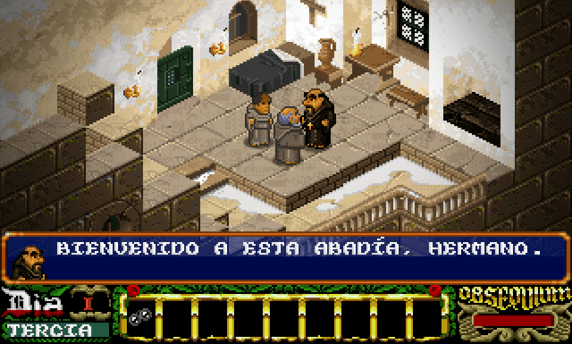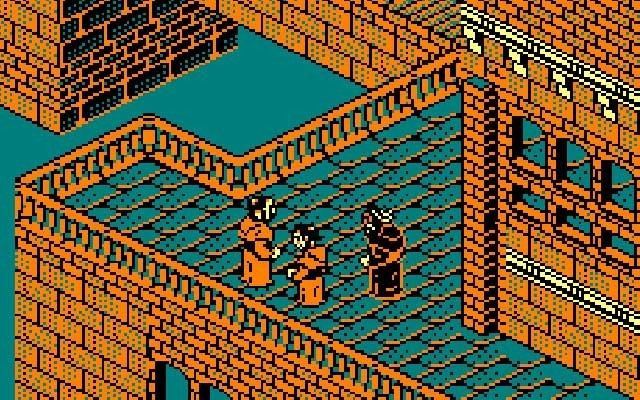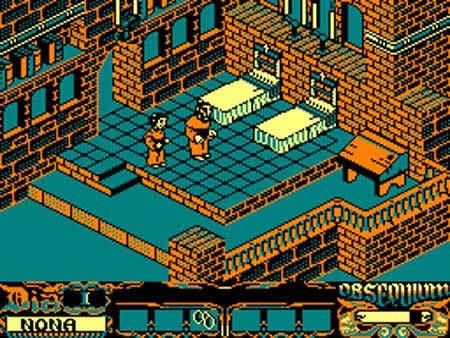9.2 /10 1 Votes
4.8/5 My Abandonware Release date(s) 1987 Initial release date 1987 Genre Action-adventure game | 9/10 Steam 4.5/5 GamesNostalgia Mode(s) Single player | |||||||||||||||||||||||||||||||||
 | ||||||||||||||||||||||||||||||||||
Similar Opera Soft games, Isometric projection games, Other games | ||||||||||||||||||||||||||||||||||
La abad a del crimen gameplay pc game 1987
La abadía del crimen (The Abbey of Crime) is a computer video game programmed in 1987 by Paco Menéndez with graphics made by Juan Delcán. The game was originally conceived as a version of Umberto Eco's book The Name of the Rose. However, Paco Menéndez and Opera Soft received no reply from Eco in order to secure the rights for the name, so the game was released as La abadía del crimen. "The Abbey of Crime" was the original working title of the novel The Name of the Rose, but it was finally rejected by Umberto Eco.
Contents
- La abad a del crimen gameplay pc game 1987
- Gameplay
- Versions
- Features
- Critical reaction
- Remakes and patches
- References

This game is a videoadventure with 3D isometric graphics, where a Franciscan friar, William of Occam (William of Baskerville in the book) and his young novice Adso have to discover the perpetrator of a series of murders in a medieval Italian abbey.

La abad a del crimen gameplay pc game 1987
Gameplay

The player controls the movement of the friar (Fray) William (mistakenly described as a monk on the user's manual). The player has also the possibility to control the movement of the novice Adso within the same screen in which Fray William is. If the key for controlling the novice is not pressed he follows Fray William most of the time. The game features other characters representing the monks of the abbey who behave according to programmed artificial intelligence to move throughout the mapping of the abbey and show a series of dialogs shown by written text which is moved along the lower part of the screen.

An extensive mapping of the abbey is represented in a large series of screens with 3D isometric graphics. A series of objects has to be collected in order to successfully complete the game. The action occurs in seven days subdivided in different Canonical hours. The time (day + current hour) is indicated at the bottom left of the screen.
The game starts with the abbot welcoming Fray William and explaining that a monk has disappeared. He also explains to Fray William that he is obligated to obey the orders of the abbot and the rules of the monastery: attend religious services and meals and stay in his cell at night while the research of the crimes is pursued. During the game the novice Adso will remind players when they have to attend offices and meals, and players can just follow him if they forget the way to the church or the refectory.
If players disobey any orders, or are late for services, etc., then their obsequium level, indicated on the bottom right-hand-side of the screen, will drop (obsequium is Latin for subservience or obedience). Once this obsequium level drops to zero, the abbot will not tolerate their disrespect any longer, and players will have to leave the abbey. This would result in the game being over. Some actions, such as missing a prayer office altogether or being caught wandering around at night, result in immediate expulsion and the end of the game.
Versions
The game was originally developed for the Amstrad CPC 6128 8 bit platform and ported to other systems: ZX Spectrum, MSX and PC. The Amstrad CPC 464 version was different from the 6128 original, since several rooms and decoration were removed to fit the game on the 64K of the 464.
The only Spectrum version was for the 128 platform, being considered one of the perfect ten games for the machine according to Retro Gamer.
Features
The music played in the game corresponds to the Minuet in G major and the sonata for flute BWV 1033 from Bach, and Crystal Palace from Gwendal. The original PC version also featured the "Ave Maria" from Schubert, in a short chorus recording that played through the speaker when the player went to the church.
There is a form of copy protection on the PC version: if an illegal copy of the game was created, in the church area, instead of "Ave Maria", a voice crying "Pirate! Pirate! Pirate!" several times will be heard instead, and after that the game will crash.
Critical reaction
The game was programmed making the most of the capacities of 8-bit computers, and taking a high level of care for details: plot, mapping, graphics, artificial intelligence of the characters, sound, etc. All of this made the game to be regarded as one of the best video games made for 8-bit computers. In spite of its singular qualities as expressed by its positive initial reviews, the game wasn't a commercial success and was never officially released outside of Spain, a country where it came to achieve a cult following.
